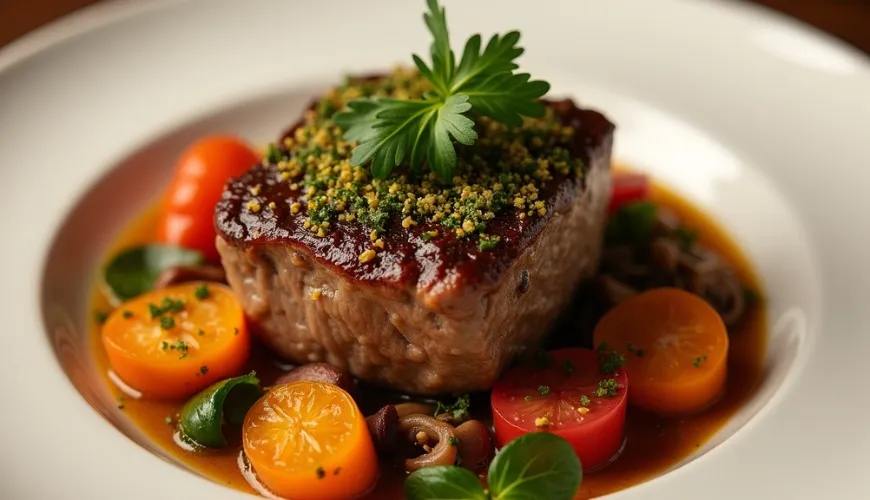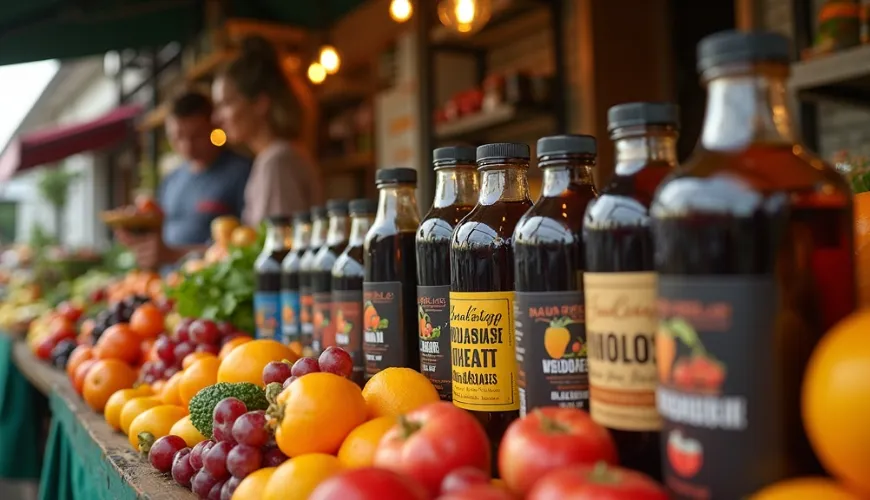
Gremolata as the Secret Ingredient for Dazzling Dishes

Gremolata - A Simple Way to Shine in the Kitchen
Among all the pestos, tapenades, and sauces that have dominated modern cuisine, there quietly lies a treasure of Italian gastronomy – gremolata. Although its name may sound exotic, its preparation is incredibly simple, yet it can transform an ordinary dish into a culinary experience. If you haven't heard of gremolata yet, don't worry – now is the perfect time to discover it.
Gremolata – What Exactly Is It?
Gremolata is a traditional Italian mixture of fresh herbs, lemon zest, and garlic, used as a final seasoning for warm dishes. It's not a sauce or a marinade, but rather a topping added to the dish at the very end – similar to parmesan or chopped herbs. This refreshing and aromatic mixture hails from Milanese cuisine and is most commonly associated with a dish called ossobuco alla milanese, which is braised veal shank with bone.
The basic ingredients are: finely chopped parsley, grated lemon zest, and garlic. That's all there is to it. Yet, it is precisely this simplicity that is its greatest strength. Combined with hot food, gremolata unfolds in all directions – adding freshness, enhancing flavors, and bringing a hint of Mediterranean sunshine to each bite.
Gremolata and Ossobuco - A Fairy Tale Combination
When you mention gremolata, you can't overlook ossobuco – a dish without which gremolata might not have existed. Ossobuco literally means "bone with a hole" and refers to the marrowbone that's part of the typical veal shank. This dish is slowly braised with root vegetables, white wine, and broth, and is topped with gremolata at the end.
This combination works almost magically. The gentle fat from the meat and marrow is perfectly balanced by the freshness of lemon and herbs, while garlic adds depth and zest. Without gremolata, ossobuco might seem heavy, but thanks to it, it becomes a harmonious dish that delights rather than burdens.
At home, you can prepare both ossobuco using a traditional recipe and gremolata on its own to use as a universal seasoning that can liven up a wide variety of dishes. From meats to fish to vegetables.
Recipe for Gremolata - A Basic That Anyone Can Master
If you're wondering how to prepare gremolata, good news – you can make it in less than five minutes. You don’t need a blender or any special tools, just a sharp knife and a bit of patience with chopping.
Basic Recipe for Gremolata:
- 1 bunch of fresh flat-leaf parsley
- 1–2 cloves of garlic (to taste)
- zest from 1 organic lemon (important that it's untreated)
Finely chop the parsley, crush or finely chop the garlic, and grate the lemon zest. Mix everything together and possibly add a bit of salt. That's it.
Gremolata can be prepared in advance, but it's best fresh – only then does it have the right freshness and balance of flavors. You can store it in a closed container in the fridge, but ideally not for more than 24 hours.
Variations on Gremolata - Carrot Top Gremolata and More
The basic recipe is a classic, but thanks to its simplicity, gremolata offers almost unlimited possibilities for variation. One of the most interesting is the so-called carrot top gremolata – gremolata made from the greens of young carrots.
Instead of parsley, it uses the green part of organic carrots, which would otherwise often end up in the trash. This version is not only tasty but also environmentally friendly – it utilizes parts of the vegetable that are often unjustly overlooked in the kitchen. Carrot greens have a slightly bitter, herbaceous taste, which in combination with lemon and garlic creates a completely new flavor profile. It pairs wonderfully with roasted vegetables, baked potatoes, or lentils.
Other possible variations include using cilantro instead of parsley, lime zest instead of lemon, or adding toasted nuts – such as pine nuts or walnuts. You can adapt gremolata to the current contents of your fridge or seasonal ingredients.
Where to Use Gremolata? Inspiration from Everyday Cooking
Although gremolata was born as a complement to ossobuco, its use certainly doesn't end there. On the contrary – its magic is in its versatility. Just add it to the plate right before serving, and even an ordinary meal can turn into a flavor adventure.
Some people use it instead of pesto on pasta – especially in combination with olive oil, it's a great and light alternative. It also works well on grilled fish, where it enhances their flavor without overpowering it. Gremolata beautifully complements roasted pumpkin, chickpeas, sweet potatoes, or cauliflower – vegetables that sometimes need a little lift.
An interesting idea is to add gremolata to soup. Try it on lentil or pumpkin cream soup – the lemon zest adds freshness, and the garlic adds depth that regular seasoning doesn’t offer.
It’s also great as a complement to various grains. For example, bulgur, quinoa, or barley groats are transformed into tasty and healthy salads with gremolata.
Simplicity as a Path to Sustainability
In a world where sustainability is increasingly discussed, gremolata is a beautiful example of how small changes in the kitchen can lead to a greater impact. You don't need exotic ingredients or artificial additives – just three basic ingredients that most people have at home. And if you also use leftovers, like carrot greens, you contribute to reducing food waste without compromising on taste.
Both restaurants and households are increasingly turning to the "nose-to-tail" and "root-to-stem" concepts, meaning the use of the entire ingredient. Carrot top gremolata fits into this trend perfectly.
As the famous chef Jamie Oliver said: "The best meals are often the simplest." And gremolata confirms this to a T.
It's fascinating that something so simple can enrich our everyday cooking so much. It's like those small details in life – they often make the biggest difference. So next time you’re thinking about how to brighten up your plate, remember this unassuming Italian mixture. Perhaps gremolata will be what takes your kitchen to a whole new level.

